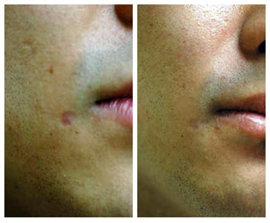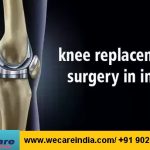What is a scar ?
A scar is the body’s natural way of healing and replacing lost or damaged skin. A scar is usually composed of fibrous tissue. Scars may be formed for many different reasons, including as a result of infections, surgery, injuries, or inflammation of tissue. Scars may appear anywhere on the body, and the composition of a scar may vary – appearing flat, lumpy, sunken, colored, painful, or itchy. The final look of a scar depends of many factors, including the skin type and location on the body, the direction of the wound, the type of injury, age of the person with the scar, and his/her nutritional status.
A scar revision is a procedure performed on a scar to alter the appearance of the scar. The revision may improve the appearance of the scar or restore function to a part of the body that may have been restricted by the scar. It is important to remember that scars cannot be completely removed.

Scar revision is one of the most complex areas of plastic surgery. Unfortunately scars can not be eliminated. Scars can not be made invisible. The plastic surgeon’s goal is to maximize the aesthetic appearance and not to compromise function. Scar revision combines many of the basic principles of plastic surgery and optimizes the use of modern technology and developments. The decision making process is difficult and necessitates an in-person consultation.
Causes and Types of Problem Scars
Problem scars may result from inflammatory diseases-particularly acne; trauma can include cuts and burns, previous surgery, and a genetic predisposition for skin to overreact to injury. Tension on the skin around the wound, foreign material in the wound, infection, or anything that delays closure of the wound may also contribute to scar formation.
The most difficult types of scars to treat are characterized by overproduction of collagen, which is the extracellular protein found in connective tissue that gives it strength and flexibility. The two types of scars that are most often considered for treatment are keloids and hypertrophic scars. Keloids are shiny, smooth benign tumors that arise in areas of damaged skin and look like irregular growths in the wound area. Hypertrophic scars, on the other hand, are thick, ropy-textured scars that are often associated with contractures.

What does surgical Scar Revision involve ?
Some of the Scar Revision procedures that are used popularly include in India : -
- Surgical removal of Keloid Tissue : – Surgery directly removes the keloid tissue and a skin graft may be used to cover the area. Skin Grafting is performed by taking a piece of healthy skin from another area of the body (called the donor site) and attaching it to the surgery area.
- Laser Surgery : – Different lasers are used to smooth, flatten or remove abnormal discoloration of the overlying skin of the scar.
- Skin Grafting : – The procedure of skin grafting involves replacing the damaged area of the skin by healthy area taken from other part of the body.
- Skin Flap Surgery : – Flap surgery is a procedure in which skin, along with the underlying fat, blood vessels, and sometimes the muscle, is moved from a healthy part of the body to the injured site.
Why the Procedure Is Performed
Problems that may indicate a need for scar revision include : -
- A keloid, which is an abnormal scar that is thicker and of a different color and texture than the rest of the skin. Keloids extend beyond the edge of the wound and are likely to come back. They often create a thick, puckered effect that looks like a tumor. Keloids are removed at the place where they meet normal tissue.
- A scar that is at an angle to the normal tension lines of the skin.
- A scar that is thickened.
- A scar that causes distortion of other features or causes problems with normal movement or function.
How many treatments will I need ? Some facial scars are unattractive simply and can be treated with a single treatment. Some which are complex may need multiple revisions. The surgeon may even employ different techniques to produce the best of results. Surgery involves removing the scar tissue if the facial scar is of contracture type. Sometimes a skin graft is put to use and in some cases Z-plasty is used. Z-plasty is a method in which the scar is shifted from one area to another. Laser resurfacing and Dermabrasion can also be used in case of rough scars.
Scar Repair - Before the procedure
Scar Repair - After the procedure















